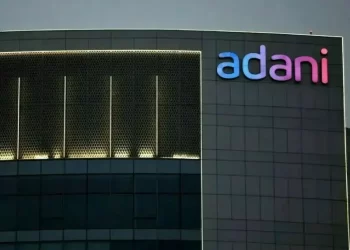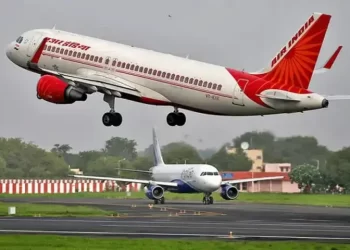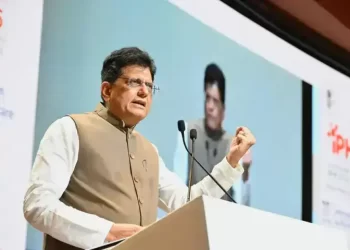EAST PALESTINE, Ohio (news agencies) — The head of the National Transportation Safety Board said Tuesday that Norfolk Southern repeatedly tried to interfere with the agency’s investigation into the East Palestine derailment and shape its conclusions about the flawed decision to blow open five tank cars and burn the vinyl chloride inside.
The NTSB also confirmed at Tuesday’s hearing that the February 2023 derailment was caused by a wheel bearing that video showed was on fire for more than 20 miles (32.19 kilometers) beforehand but wasn’t caught in time by inaccurate trackside detectors. The board also approved more than two dozen recommendations to prevent similar disasters, including establishing federal rules for those detectors and the way railroads respond to them along with reviewing how officials decide whether to ever conduct a vent and burn again.
More than three dozen freight cars derailed Feb. 3, 2023, on the outskirts of East Palestine near the Pennsylvania border, including 11 carrying hazardous materials. Some residents were evacuated that night, but days later more had to leave their homes amid fears of an imminent explosion. Despite potential health effects, officials intentionally released and burned toxic vinyl chloride three days after the crash, sending flames and smoke into the air.
At the end of the meeting, NTSB Chair Jennifer Homendy accused Norfolk Southern of interfering with the investigation and abusing its status as a party to the probe to help gather information.
“Norfolk Southern’s abuse of the party process was unprecedented and reprehensible,” she said.
Numerous times, Homendy said, the railroad delayed or failed to give investigators information. Twice, Homendy called the railroad at the request of investigators and threatened to issue subpoenas for information, she said.
A railroad contractor told investigators that it did not take or keep records of temperature changes on the tank cars containing vinyl chloride, she said. But the NTSB suspected otherwise.
“We found through text messages through one of their employees, who provided that information in later interviews that they did keep those records,” Homendy said. “It took about two months before the team received those texts and the emails.”
Some of the findings discussed Tuesday weren’t a surprise because the NTSB has released quite a bit about this investigation already, but the hearing revealed the most details yet about the overheating bearing and the failure of trackside detectors to catch its soaring temperatures. The board also delved into why the decision to deliberately vent and burn the vinyl chloride was flawed.
After discussing how a trackside detector in Salem, Ohio, failed to accurately measure the bearing’s temperature, NTSB investigators said that Norfolk Southern and its contractors compromised the integrity of the vent-and-burn decision by withholding information from Oxy Vinyls, the company that made the vinyl chloride, and evidence that the tank cars were cooling after the crash.
The officials who made that decision said they never received any information suggesting the vent and burn wasn’t their only option.
“Norfolk Southern and its contractors continued to assert the necessity of a vent and burn, even though available evidence should have led them to re-evaluate their initial conclusion,” investigator Paul Stancil said.
The railroad defended the decision again Tuesday and said it was based on more than just the temperature readings. Officials also had concerns about the way the pressure-relief devices malfunctioned on the tank cars though Homendy said some of those fears were misplaced based on what investigators learned. Norfolk Southern added that nothing kept Oxy Vinyls from joining the discussion in the command center and sharing its opinion about the tank cars.
Oxy Vinyls experts testified at earlier NTSB hearings they were certain a feared chemical reaction that could have caused those tank cars to explode wasn’t happening. Oxy Vinyls didn’t address the questions about its role in the vent and burn decision in a statement Tuesday.
Norfolk Southern emphasized in its statement that it recommended the vent and burn because of safety concerns. Homendy said that in a private meeting two weeks ago a senior company executive told the board that Norfolk Southern wanted to put to rest the “rumor” that the railroad made that decision to get trains moving again more quickly..
The exchange ended, she said, with what she said was a threat from the railroad.
“It was delivered that way to use every avenue and opportunity to vigorously defend their decision-making in media and hearings going forward. That is your right. But it is not our role to defend Norfolk Southern. We’re here to protect the American people and the traveling public,” Homendy said.
Norfolk Southern had just issued a lengthy statement promising to study the NTSB’s recommendations and work to improve safety shortly before Homendy launched into her rebuke. In response, railroad spokesman Tom Crosson said Norfolk Southern always tried to provide the NTSB all the relevant information they needed.
“At all times, Norfolk Southern cooperated fully and ethically with the investigation with full transparency,” Crosson said.
But the top safety expert at the largest rail union who was part of the NTSB investigation said that while these findings highlight concerns about Norfolk Southern, he worries about all the major Class I railroads’ commitment to safety. Jared Cassity with the SMART-TD union said Union Pacific’s recent efforts to undermine regulators’ safety survey is one of the latest examples.









